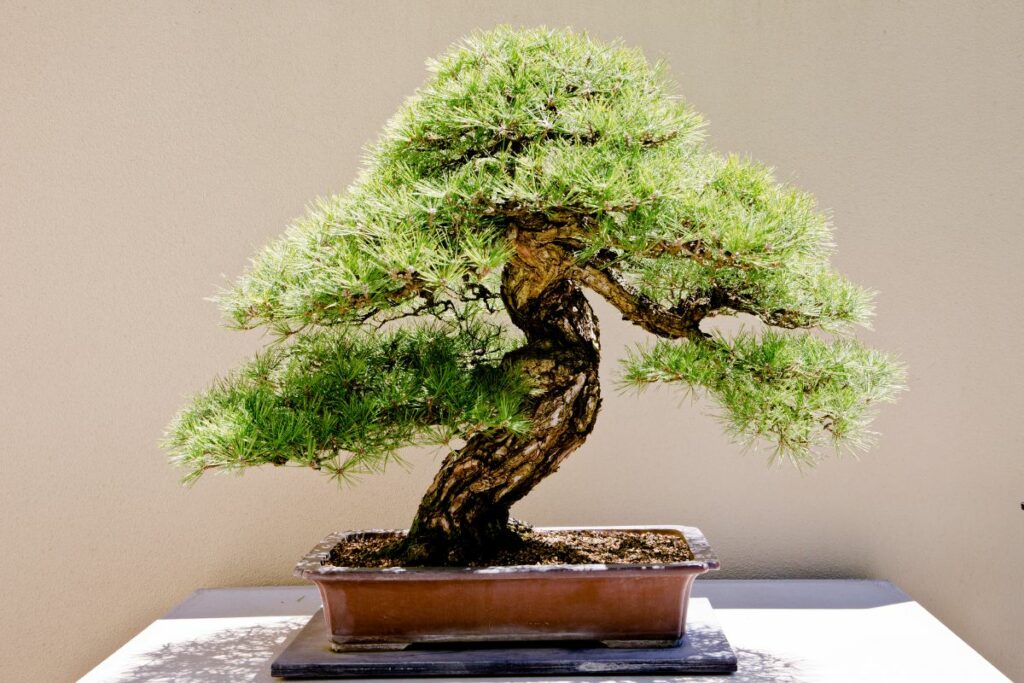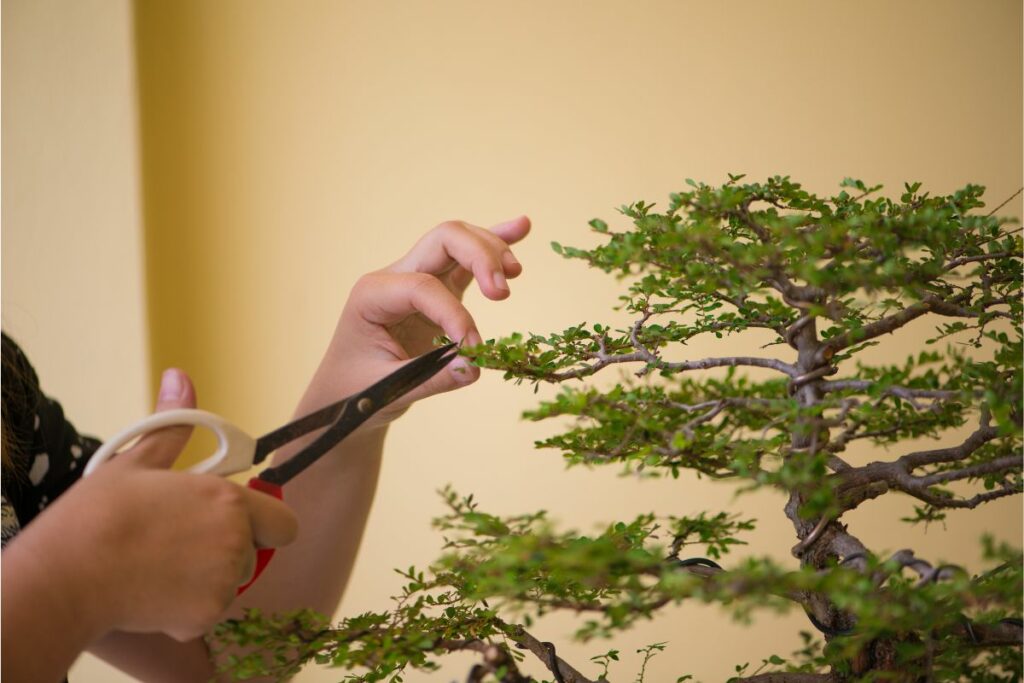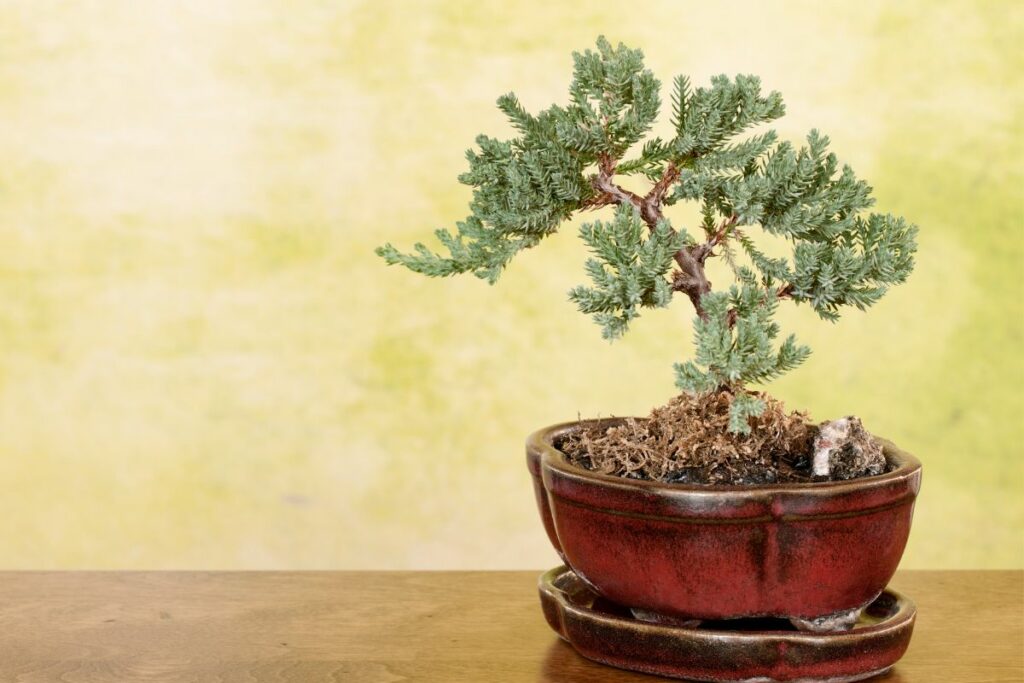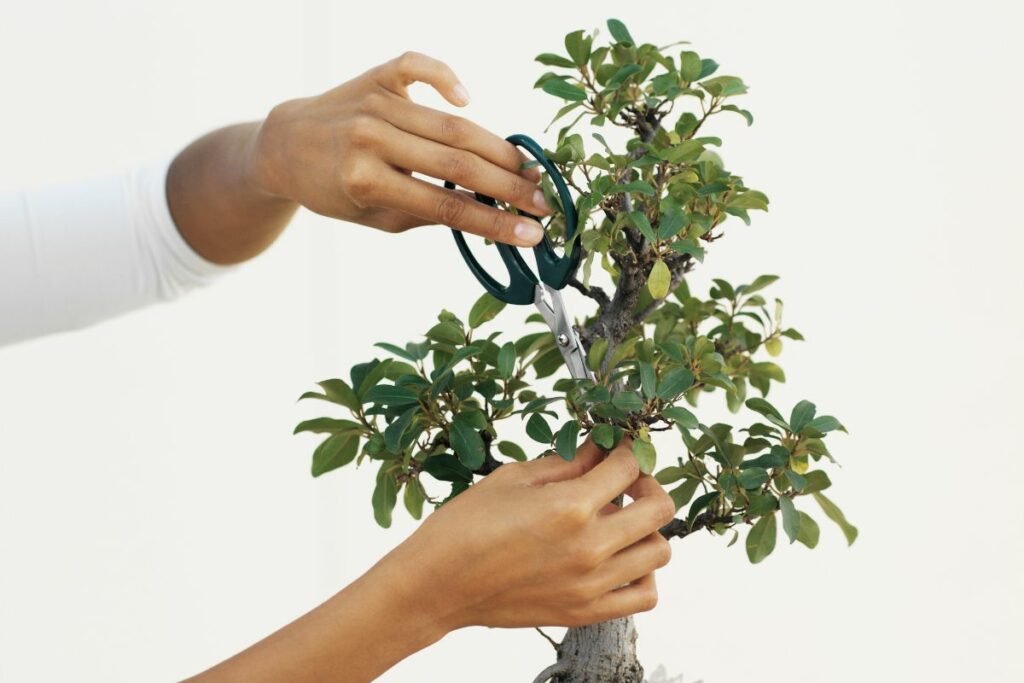Do you ever find yourself wondering if bonsai is cruel? After all, it involves shaping a small tree into an artistic piece of living art. It’s a practice that has been around for centuries and is still popular today. But is it ethical?
This article will take a look at the ethics involved in bonsai. We’ll explore the various arguments both in favor of and against this form of aesthetic gardening. We’ll discuss how it can be both beneficial and detrimental to the environment. Finally, we’ll provide some tips on how to ensure your bonsais are ethically grown and cared for.
So, if you’re considering growing your own miniature tree or have always been curious about this unique form of gardening, read on to learn more about the ethical implications of bonsai!
1. What Is Bonsai?

Bonsai is an art form that involves cultivating miniature trees in containers and shaping them to a desired aesthetic. It originated in China more than two thousand years ago, and it has since become popular in Japan and other parts of the world. The purpose of bonsai is to create a miniaturized version of nature, with trees that are no taller than three feet and often much smaller.
The question of whether bonsai is cruel or ethical is one that has been debated for some time now. Some argue that bonsai can be seen as a form of animal cruelty because it requires pruning the roots and branches to maintain the desired shape, which can be stressful for the tree. On the other hand, many believe that there is nothing wrong with bonsai as long as it is done properly and with respect for the tree’s natural environment.
Overall, there are valid points on both sides of this debate, so it really comes down to personal opinion. While some may think that bonsai is cruel or unethical, others may find it to be an enjoyable hobby that allows them to appreciate nature in a unique way. Ultimately, however, those who practice bonsai must take responsibility for their actions and ensure they are treating the trees with proper care and respect.
2. The Art Of Bonsai
The art of bonsai is an ancient practice that has been around for centuries. It involves pruning and training a small tree or shrub into a desired shape, which can range from a simple bush to a complex piece of art. The goal of the bonsai artist is not only to create something visually pleasing, but also to use their knowledge of horticulture to nurture and care for the bonsai in order to achieve a healthy, long-lasting plant.
In terms of ethics, the practices used in bonsai can be seen as humane and respectful. Bonsaists take great care when pruning branches, using techniques such as pinching off leaves or cutting back shoots with sharp shears. This ensures that the bonsai remains healthy while still being able to be shaped into an aesthetically pleasing form. Bonsaists also use soil mixtures specifically tailored to the type of tree they are working with, so that it receives all the nutrients it needs without becoming overly watered or over-fertilized.
When it comes down to it, caring for a bonsai requires skill and dedication from its owner. Taking proper care of one’s bonsai means understanding its needs and responding accordingly. It also requires patience – much like any other kind of gardening – since results won’t always happen overnight! With the right amount of attention and effort, however, anyone can create beautiful works of living art that will last for years to come.
3. The History Of Bonsai
The history of bonsai is a long one, stretching back to China before eventually making its way to Japan. It began as an art form that was developed for Buddhist monks and imperial households, who used it as a way of bringing nature indoors. Bonsai has evolved over time, but its core principles remain the same: creating an aesthetic representation of nature in miniature form.
What makes bonsai so unique is the mastery of its craftsmanship. It takes years of practice and patience to master the techniques needed to shape and train a bonsai tree. The result is a work of art that can be enjoyed for generations. This is why many people consider bonsai to be an investment – not only in terms of money, but also in terms of time and effort.
It’s easy to see why many people find bonsai attractive, both aesthetically and emotionally. Its beauty speaks for itself – but more than that, it evokes feelings of peace and tranquility from those who take part in its cultivation process or simply admire it from afar. It’s no wonder that this ancient art form has stood the test of time and continues to captivate audiences around the world today.
Bonsai offers something special for everyone – whether you’re looking for beauty or relaxation; a challenge or a connection with nature; or simply something beautiful to look at, there’s something here for you. No matter how much experience you have with this ancient art form, there’s always something new to learn – and appreciate.
4. The Care And Maintenance Of Bonsai Trees

When it comes to the care and maintenance of bonsai trees, there are a few things to consider. Most importantly, it’s important to remember that bonsai is not a cruel practice, as long as proper care is taken. There are a few basic principles that you should keep in mind when caring for your bonsai tree.
First, you’ll need to provide your bonsai with the right amount of sunlight. Bonsai trees require at least four hours of direct sunlight per day, and can even tolerate more if necessary. It’s also important to make sure that your bonsai tree is kept in a well-ventilated area, so that it receives ample air circulation. Additionally, you should water your tree regularly and trim back any branches or roots that have grown too long.
Finally, pruning is an essential part of maintaining a healthy bonsai tree. Pruning helps keep the tree small and encourages new growth while removing any dead or diseased branches. Pruning should be done on both indoor and outdoor varieties of bonsai trees in order to maintain their shape and size. Additionally, regular fertilization will help ensure that your bonsai remains healthy and thriving for many years to come.
Overall, taking proper care of a bonsai tree requires patience and dedication from its owner, but with the right knowledge and attention, anyone can successfully grow their own beautiful bonsai masterpiece!
5. Ethical Considerations For Growing Bonsai
It is important to consider the ethical implications of growing bonsai. As with any other activity that involves animals or plants, there are certain ethical considerations to bear in mind. From the perspective of animal welfare, bonsai isn’t necessarily cruel. It requires regular trimming and pruning, but it doesn’t involve inflicting pain on a living creature. The maintenance of bonsai trees is more akin to gardening than animal husbandry.
However, there are still ethical considerations when it comes to bonsai cultivation. For example, the trees need to be trimmed and pruned regularly for them to stay healthy and look aesthetically pleasing. So if you’re considering taking up this hobby, make sure you have the time and dedication needed for its upkeep. Another ethical consideration is the source of your tree – make sure you purchase your tree from a reputable seller who hasn’t harvested them from natural habitats or endangered species.
Finally, another thing to bear in mind is that growing bonsai trees may require specific tools that can be difficult and expensive to obtain. Before starting out as a hobbyist, do plenty of research into what kind of tools you’ll need and how much they cost so that you don’t end up spending too much money on something that may not work out in the long run. Ultimately, if you do decide to take up bonsai cultivation as a hobby, just make sure that you’re mindful of the ethical implications involved in order to ensure everyone’s safety and well-being throughout your journey.
6. Common Misconceptions About Bonsai Trees
When it comes to bonsai trees, there are many misconceptions and misunderstandings out there. In this article, we will address some of the common myths about bonsai and explore the ethical considerations that come with growing them.
One of the most common misconceptions about bonsai is that they are cruel or unethical to grow. While it’s true that bonsai require a great deal of care and attention, these plants can actually thrive in their confined state if provided with the right conditions. Bonsai trees are not cruel or unethical; rather, they can be an enjoyable and rewarding hobby to pursue.
Another myth is that bonsai trees must be kept in small pots forever. This is not true; while they do need to remain in a pot for most of their life, they can be transplanted into larger containers when needed. This will give your tree more space for growth and ensure it doesn’t become root-bound. Additionally, you can also prune your tree regularly to control its size and shape, as long as you’re careful not to damage its delicate branches.
When deciding whether or not to keep a bonsai tree, it’s important to remember that these plants require a lot of love and care over their lifetime. They need regular watering, fertilizing, pruning, repotting and protection from pests and diseases – all of which can take time and effort on your part. But if you’re willing to put in the work, you’ll be rewarded with a beautiful living sculpture that will bring joy into your home for years to come!
7. The Debate Over Bonsai Cruelty
The debate over bonsai cruelty has been ongoing for many years, and it’s still not easy to make a definitive conclusion. It’s undeniable that bonsai trees require intensive maintenance, but the question is whether or not this constitutes as cruelty. Let’s take a look at both sides of the argument.
On one side, some people say that bonsai tree cultivation is an art form and should be viewed as such; they argue that the process of bending and pruning branches can be seen as creating a beautiful piece of living art, similar to how a sculptor shapes clay or stone. They also point out that bonsai trees are actually very healthy when properly cared for – something which requires knowledge and skill.
On the other hand, some argue that subjecting a tree to such intensive pruning is cruel and unnatural – after all, it goes against the tree’s natural growth cycle. What’s more, they claim that it can cause serious health problems if done incorrectly due to the damage inflicted on roots and branches in particular.
No matter which side you agree with, it’s important to remember that facts are key when discussing ethical issues such as this one. While there are certainly risks associated with growing a bonsai tree without proper training or experience, with careful tending these same trees can become healthy works of living art.
8. Alternatives To Bonsai Trees
When discussing the ethical implications of bonsai care, it’s important to consider the alternatives. While some people may argue that bonsai trees are cruel and unethical, there are ways to enjoy this type of gardening without compromising on ethics. In this section, we’ll explore some of these alternatives and how they compare to traditional bonsai trees.
One option is to use air layering instead of root pruning when trimming a tree. Air layering involves cutting off a branch and then wrapping it in moist sphagnum moss and soil until it develops roots. This technique allows you to shape a tree without damaging its root system, which is one of the main concerns with traditional bonsai care. As an added bonus, the new plant can be easily transplanted into a separate container or pot once it is established.
Another alternative is using artificial plants or trees instead of real ones. Artificial plants provide the same aesthetic appeal as real plants but don’t require any maintenance or upkeep. They also don’t need regular watering or sunlight like real plants do, making them a great option for anyone who doesn’t have the time or energy for regular plant care. Plus, because they’re made from synthetic materials, artificial plants won’t die or wither away over time like living plants do.
Overall, there are plenty of ways to enjoy bonsai care without compromising on ethics. Whether you choose to use air layering or artificial trees instead of traditional pruning methods, there are options available that will satisfy your gardening needs while also being more ethical than traditional methods.
9. Ways To Make Bonsai More Ethical
At this point, it’s worth exploring some ways to make bonsai more ethical. After all, if there are ethical concerns with the practice of growing and caring for bonsai trees, there must be some action that can be taken to ensure that these concerns are addressed.
First, gardeners should make sure that they’re purchasing their bonsai plants from a reputable source. This means avoiding mass-produced varieties from large chain stores, which may not be able to guarantee the quality or health of the plants they supply. Instead, look for reputable nurseries or individual growers who have a good reputation and knowledge of bonsai care.
The second way to make bonsai more ethical is by providing proper care and maintenance for your plant. Bonsai trees require special attention in order to remain healthy – things like regular pruning, re-potting and fertilizing are necessary if you want your tree to thrive. You should also research the best climate conditions for whatever type of tree you’ve chosen – too much heat or cold can damage your plant beyond repair.
Finally, most importantly, it’s important to understand that bonsai isn’t just about owning a pretty plant – it’s about developing a relationship with your tree over time. Taking the time to learn about how best to care for your bonsai will help ensure that you’re providing the best possible environment in which it can thrive and flourish. With the right care and dedication, you can create an ethically-minded practice of growing and caring for beautiful bonsai trees at home.
10. The Future Of Bonsai
As we consider the ethical implications of bonsai, it’s important to think about what the future holds for this ancient art form. Bonsai has been around for centuries and is still popular today, but how will it evolve to meet modern standards of animal welfare?
One possible development is a focus on more naturalistic designs. Currently, a lot of bonsai trees have their foliage pruned in ways that don’t appear in nature, which can be uncomfortable for some viewers. By shifting to more naturalistic designs, bonsai practitioners could create amazing works of art while avoiding any potential issues with animal cruelty.
Another option is finding alternative materials to use instead of live plants. For example, many artists have begun using artificial plants as a way to create beautiful sculptures without involving any living things. These alternatives could be used in combination with live plants or even on their own as a creative solution to ethical dilemmas surrounding bonsai.
It remains to be seen how bonsai will evolve over time. But by considering potential changes and exploring alternative approaches, we can ensure that those who practice this ancient art form can do so in an ethical manner that respects all living things involved.
Frequently Asked Questions
What Types Of Plants Can Be Used To Make A Bonsai Tree?

When it comes to creating a bonsai tree, there are many different types of plants that can be used. Whether you want to use a coniferous tree, like a juniper or pine, or a deciduous tree, such as larch or maple, the possibilities are almost endless. Each type of plant has its own unique set of characteristics that can be used to create an amazing bonsai masterpiece.
When selecting plants for your bonsai, it’s important to consider factors such as size and shape. Some trees may grow too large for your desired design and some may not have the desired shape when pruned correctly. It’s also important to consider how much time and effort you’re willing to put into caring for your bonsai – some require more frequent pruning and maintenance than others.
No matter what type of plant you choose for your bonsai, it’s important to remember that this is an art form that requires patience and dedication. Taking the time to learn about each type of plant will help you create a beautiful bonsai tree that is both aesthetically pleasing and easy to maintain in the long run. With the right care and attention, your bonsai could easily become a beloved piece in any garden or living room.
Are There Any Special Tools Needed To Maintain A Bonsai Tree?
When it comes to caring for bonsai trees, you may be wondering if there are any special tools required. The answer is yes: although basic gardening items such as pruners and a watering can are helpful, there are some unique items that will help you keep your tree looking its best.
First, bonsai wire is necessary for shaping the branches and trunk of the tree. This metal wire, which can come in various thicknesses and colors, is wound around branches to encourage them to bend in a certain direction. It’s important to monitor the wire regularly so it doesn’t cut into the bark or restrict growth.
Second, a concave cutter is used to trim off excess branches or twigs. It’s designed with a curved cutting edge that creates a shallow indentation on the branch instead of leaving behind an unsightly stub. This tool is essential for creating attractive shapes and natural-looking bends in your tree.
Finally, a root hook is used to untangle roots when repotting bonsais; this helps prevent damage to delicate root systems while keeping them organized during transplanting. A root rake can also be employed in this task – it helps separate intertwined roots and gently remove soil from between them. By using these tools correctly and with care, you will ensure that your bonsai tree remains healthy and beautiful for many years to come.
How Much Time Is Required To Properly Care For A Bonsai Tree?
Caring for a bonsai tree may seem intimidating, but it doesn’t have to be. With the right knowledge and a bit of time, anyone can learn how to maintain a bonsai tree. One important factor in proper care is understanding how much time is required.
Having the right information is key when it comes to caring for a bonsai tree. The amount of time needed for bonsai maintenance will vary depending on several factors including the age and species of the tree and its living environment. Generally speaking, daily attention isn’t necessary; however, periodic tasks like pruning and trimming will need to be done.
For beginners, it’s important to start out with a low-maintenance species that can adapt easily to different environments. This will help reduce some of the work involved in caring for a bonsai tree–though regular check-ins are still recommended at least once every few weeks. A trained professional or experienced hobbyist can provide valuable advice on specific requirements and techniques.
Whether you’re just starting out or have been caring for bonsais for years, devoting the right amount of time is essential for keeping your trees healthy and happy. With careful planning, you can ensure that your bonsais receive the attention they need without sacrificing too much of your own time.
Is It Possible To Repot A Bonsai Tree?
Caring for a bonsai tree requires patience and dedication, but is it possible to repot one? Repotting is an essential part of a bonsai’s maintenance and should be done regularly. This begs the question – how do you go about repotting a bonsai tree?
The process of repotting a bonsai tree isn’t necessarily difficult, but it does require some preparation. First, you’ll need to choose the right pot or container for your bonsai tree. You’ll want to consider the size of the pot in relation to the size and age of your tree. Additionally, you’ll need to make sure that the soil you’re using is suitable for your type of bonsai tree.
Once everything is ready, carefully remove your bonsai from its old pot. Loosen the roots gently with your fingers or a small tool if necessary. Place enough soil at the bottom of the new pot so that when you place your bonsai in the new container, it will sit at its previous height. After that, fill in around its sides with more soil until it’s firmly placed in its new home. Finally, give it some water and let it settle into its new environment before fertilizing it as needed.
Repotting may seem intimidating at first glance but with careful consideration and preparation beforehand, it can be relatively straightforward – just remember to handle your plant gently! With regular care and attention, a well-repotted bonsai will thrive for years to come.
Are There Any Particular Climates That Are Better Suited For Bonsai Trees?
When it comes to bonsai trees, many people wonder if there are any particular climates that are better suited for them. While they can be grown in a variety of climates, certain conditions result in healthier and more beautiful plants. It is important to understand what environment works best for a bonsai tree before planting one.
Bonsai trees need special care when it comes to climate. Different species have different optimal temperatures, so it is important to research the specific tree you are looking for. Generally speaking, most bonsais prefer a warm climate with moderate humidity and plenty of sunlight throughout the day. In cold climates, they must be taken indoors during the winter months or kept in an area where temperatures do not drop too low.
When it comes to fertilizing and watering your bonsai tree, remember that overfertilizing and overwatering can cause stress on the plant and even kill it if done too often. The frequency of watering will depend on how hot or cold your climate is: in warmer climates, more frequent watering may be necessary while in cooler climates, less frequent watering should suffice. Additionally, keeping your bonsai out of direct sunlight during extreme heat can help reduce stress on the plant.
Ultimately, understanding which environment works best for your bonsai tree is key to maintaining its health and beauty over time. Choosing an appropriate location outdoors or indoors is essential for giving your bonsai the attention it needs – from temperature control to adequate light exposure – in order to thrive.
Final Words
Bonsai trees are an interesting and unique form of gardening that require quite a bit of care and attention to be sustained. As with any plant, there are some ethical considerations to take into account when deciding whether or not to keep a Bonsai tree. While some may argue that it is cruel to keep these small trees in such confined spaces, others argue that with the right tools and knowledge, they can be maintained properly and cared for as any other plant would be. Ultimately, it’s up to each individual to decide if they feel comfortable caring for a Bonsai tree in an ethical way. With the proper tools and knowledge, anyone can create a beautiful Bonsai tree –– even those with limited space or time.

